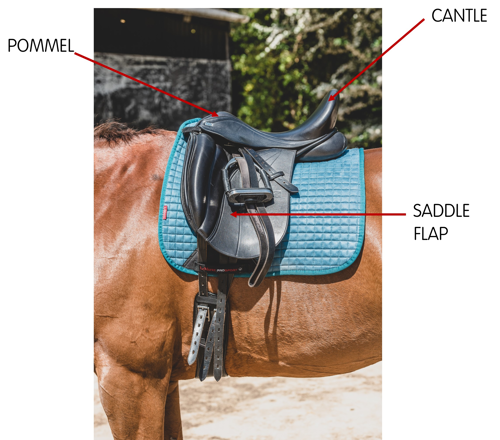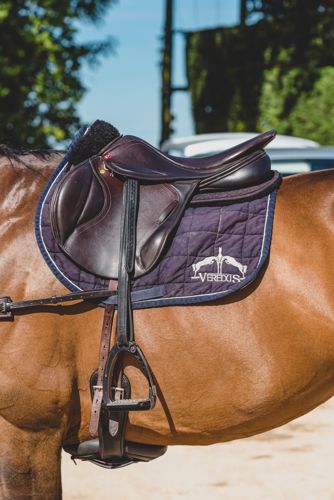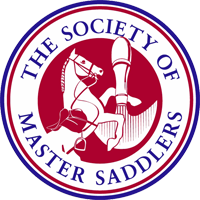Equestrian sports are as diverse as the horses that participate in them. Show jumping, dressage and eventing each require a unique set of skills and specific equipment to maximise performance. However, for those seeking cost-effective solutions, there are ways to find common ground and repurpose saddles across disciplines without compromising the safety or wellbeing of your horse. To save costs in this way, you need to know the distinctive requirements of show jumping, dressage and eventing, and when saddles can be used across disciplines.
It’s important to think about how your horse will change shape due to weight, fitness and muscle development, meaning the fit of their saddle can change throughout the competition year. Having your saddle checked by a Society of Master Saddlers (SMS) Qualified Saddle Fitter a minimum of every six months will help make sure your horse stays comfortable and performing well.
If competing under affiliation always check the up-to-date rule book which will include an Approved Tack and Equipment Guide, illustrating the tack, bits and equipment permitted. These rules can often apply to unaffiliated events, so always check with the event organisers if you’re unsure on your tack suitability.
Show jumping
At the lower levels, a well-fitting general purpose (GP) saddle is suitable for many riders. Some have moveable knee blocks, that can be adjusted to give you support where you need it when you’re jumping.
If you’re a taller rider with long legs a jump saddle may be a better option. The more forward cut saddle flap will be more comfortable for you to ride in with shorter stirrups. Also, this style of saddle has a flatter seat compared to GP and dressage saddle, which gives you more freedom of movement that may be needed when show jumping or going cross country. A jump saddle has knee or thigh blocks – many also have calf blocks, which can offer security and help you maintain the correct and balanced position while jumping. These blocks can be particularly useful when they’re moveable so you can use your saddle for flatwork too.
Dressage
Dressage requires a different set of tack compared to show jumping and eventing. A dressage saddle can be identified by its long, straight saddle flaps that allow the rider's leg to hang straight down. They usually have large blocks to support the rider’s leg in the classic position. It has a higher cantle and pommel that allows the rider to sit straight and comfortably. The deep seat and long flaps mean a dressage saddle isn’t suitable if you need the saddle for jumping too, however a well-fitting general-purpose saddle can offer a more balanced position for both dressage and jumping for those riders competing across various disciplines.

Eventing
Eventing combines the disciplines of dressage, cross-country and show jumping, testing the versatility and stamina, of both horse and rider. Due to its multi-faceted nature, eventing demands a wider range of equipment. A well-fitting all-purpose saddle can serve as a practical choice for some riders, as it offers a balance between jumping and dressage requirements. Investing in a high-quality all-purpose saddle with removable blocks can be a cost-effective option, because the same saddle can be adapted for dressage or show jumping by simply altering the block positioning.
However, close contact (single flap) jump saddles are popular and often the more practical and comfortable choice for the cross-country phase. This style of saddle allows the freedom of movement needed when riding over varying terrain, also allowing the rider to stay in balance while jumping and riding at speed.

While repurposing saddles across disciplines can save costs, investing in other items may be necessary for you and your horse’s comfort especially when competing at higher levels. If you’re on a budget, why not consider buying second-hand or opt for synthetic over leather?
Make sure you prioritise the welfare and safety of your horse. Tack should always be correctly fitted and regularly inspected for signs of wear and tear. Investing in professional guidance from a SMS Qualified Saddle Fitter at least every six months ensures the horse's comfort and minimises the risk of injury.
For more information about The Society of Master Saddlers and to find your nearest SMS member visit www.mastersaddlers.co.uk or contact on 01449 711642.

Get in touch – we’re here to help
The BHS Horse Care and Welfare Team are here to help and can offer you further advice with any questions you may have. Contact us on 02476 840517* or email welfare@bhs.org.uk – You can also get in touch with us via our social media channels.
Opening times are 8:35am - 5pm from Monday – Thursday and 8:35am - 3pm on Friday.
*Calls may be recorded for monitoring purposes.
